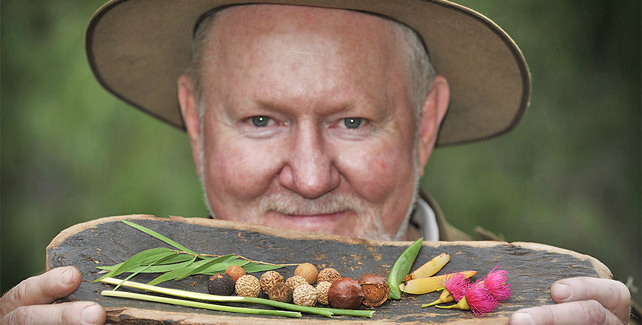SURVIVAL expert Bob Cooper says panic leads to fatal mistakes, writes SARAH HUDSON
It’s man’s greatest fear: lost, thirsty, hungry, in danger from fierce creatures, confronted with death.
But don’t worry, says outback survival expert Bob Cooper, he has the answers.
“There are two things that kill people who are lost or facing a life-threatening survival situation,” says Bob, who will be teaching bush survival skills at a two-day course this weekend at Anglesea.
“Lack of knowledge has killed many people. But even those with knowledge, if they get too emotional this overrides common sense.
“Fear is a primeval, basic emotion, but it’s when people panic that mistakes are made.
“I teach people the knowledge, and strategies to deal with their emotions.”
Bob, who lives in Western Australia, has taught the best in the business to survive in the most dangerous terrain for the past 30 years, including RAAF fighter pilots heading to Afghanistan and mining company employees. He passes on what he has learnt from the SAS, Aborigines and America’s Cherokee people.
He has even featured in BBC and National Geographic documentaries.
“I told the fighter pilots that the best survival tool in the world is a rock. It can be a knife, a scraper, you can use it for friction to light fires and cut shelter,” says Bob, who has designed and sells his own $90 kit.
“I have walked through the Pilbara with a kit the size of a soap container.
“I like to test myself by going bush and taking as little provisions as possible.”
Having survived six death-defying experiences – including a helicopter crash and three maydays on the ocean – Bob says while knowledge and emotional control can make the difference between life and death, “any mishap can happen”.
“But if you’ve got a survival kit and have done a course, you won’t die. The idea is to avoid turning a mishap into a tragedy,” he says.
“Getting lost is a mishap. If you panic and go in the wrong direction, that’s a tragedy.”
Bob, 57, says his thirst for adventure and hunger to be in the bush began as a child.
“I was born with it. Even in primary school, I couldn’t stop leaving home to go bush. I was brought up by my grandparents near the Swan River and they’d tell me, ‘Go out and have a good time’.
“It was a delightful childhood. As a teen, I’d hitchhike out of Perth and survive in the bush.”
His first official schooling in outback survival came with a bushcraft course in 1978, followed by a 26-day intensive with the SAS, then work for the West Australian Museum with traditional Aboriginal cultures.
“When I came out of the SAS, I thought I knew everything,” Bob says.
“When I worked with indigenous cultures – my first trip was seven weeks in the Great Sandy Desert – I realised how little I knew.”
Since then he has worked in a Texan national park with American Indians, with the Kalahari bushmen in Botswana and in remote Malaysian jungle.
He says his work has been given a boost thanks to doomsayers who predict the end of the world, or at least civilisation-destroying disasters – as well as TV survival guru, Bear Grylls.
“Everyone wants to be a baby Bear,” Bob says. “Some of his antics are foolish, like jumping off a cliff into an unknown amount of water, but he has created a massive interest in the field.
“A lot of people are scared of the bush yet there’s nothing more natural. We are all part of the environment. If you fear the bush, there goes your respect for it.”
Source: The Weekly Times
Author: Sarah Hudson
Link: http://www.weeklytimesnow.com.au
Main Image: Theo Fakos


Recent Comments